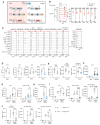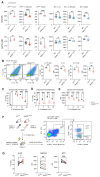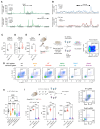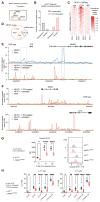Mef2d potentiates type-2 immune responses and allergic lung inflammation
- PMID: 38935708
- PMCID: PMC7616247
- DOI: 10.1126/science.adl0370
Mef2d potentiates type-2 immune responses and allergic lung inflammation
Abstract
Innate lymphoid cells (ILCs) and adaptive T lymphocytes promote tissue homeostasis and protective immune responses. Their production depends on the transcription factor GATA3, which is further elevated specifically in ILC2s and T helper 2 cells to drive type-2 immunity during tissue repair, allergic disorders, and anti-helminth immunity. The control of this crucial up-regulation is poorly understood. Using CRISPR screens in ILCs we identified previously unappreciated myocyte-specific enhancer factor 2d (Mef2d)-mediated regulation of GATA3-dependent type-2 lymphocyte differentiation. Mef2d-deletion from ILC2s and/or T cells specifically protected against an allergen lung challenge. Mef2d repressed Regnase-1 endonuclease expression to enhance IL-33 receptor production and IL-33 signaling and acted downstream of calcium-mediated signaling to translocate NFAT1 to the nucleus to promote type-2 cytokine-mediated immunity.
Conflict of interest statement
Figures






References
-
- Walker JA, McKenzie ANJ. TH2 cell development and function. Nat Rev Immunol. 2018;18:121–133. - PubMed
Publication types
MeSH terms
Substances
Grants and funding
LinkOut - more resources
Full Text Sources
Medical
Molecular Biology Databases

